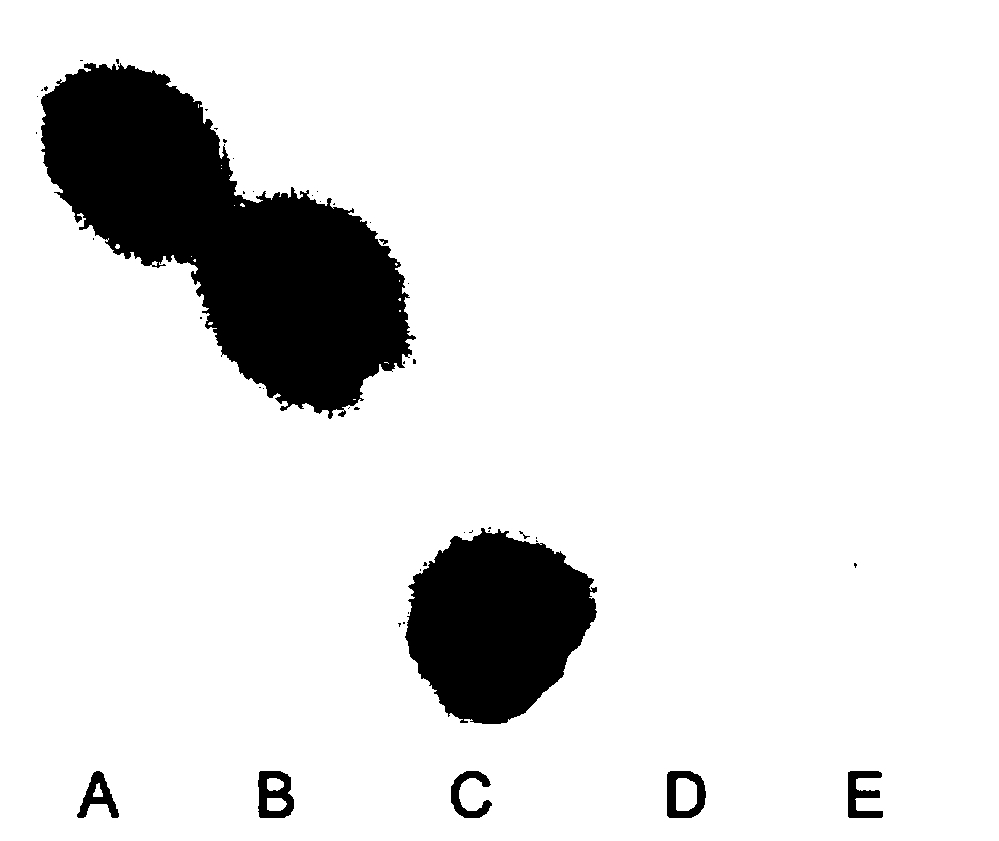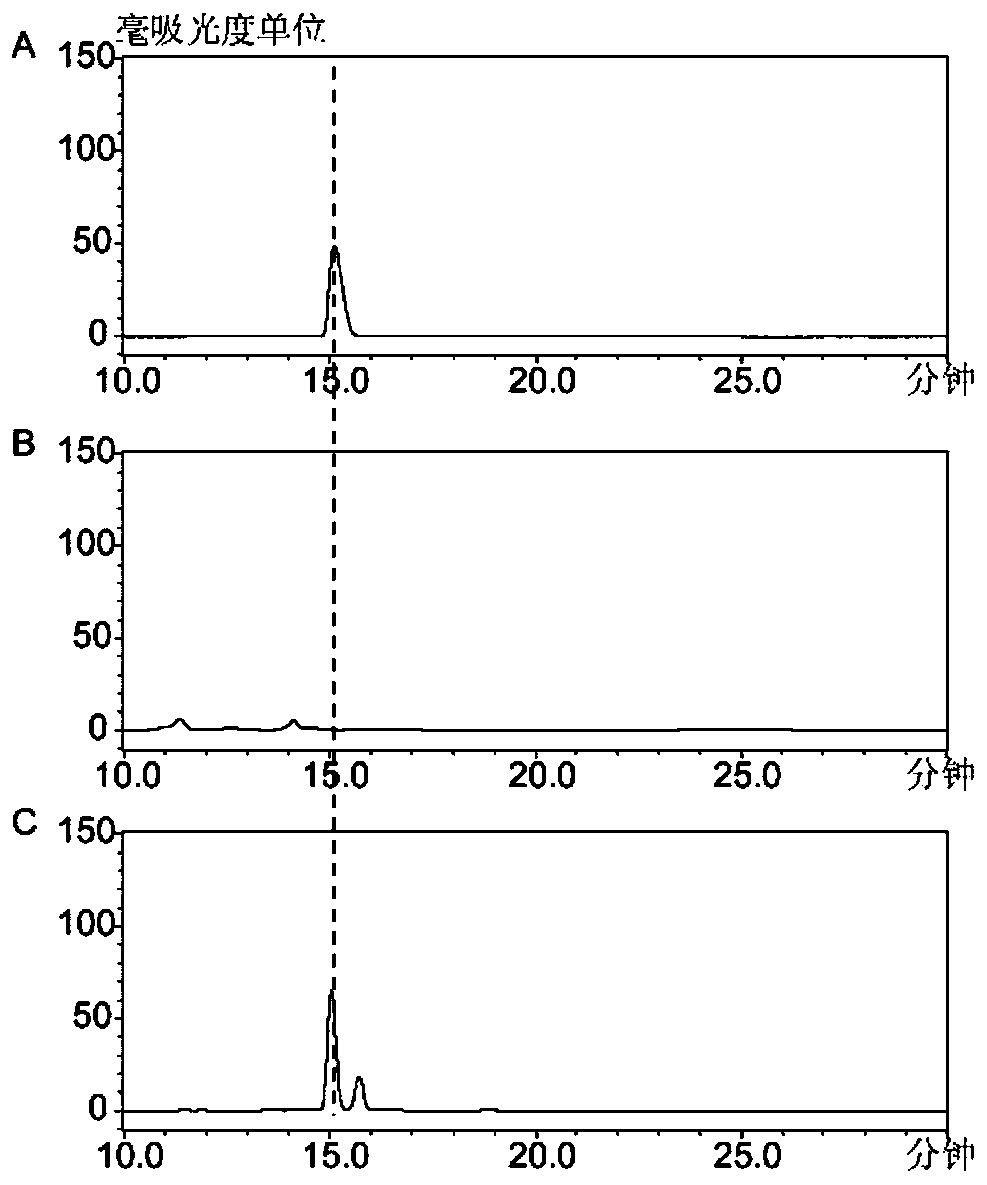Optimized saccharomyces cerevisiae strain capable of producing fucosyllactose at high yield and application of saccharomyces cerevisiae strain
A technology of fucosyllactose and Saccharomyces cerevisiae, which is applied in the field of genetic engineering, can solve the problems of pollution, difficulty in meeting industrial production, affecting the difficulty of product separation and purification, and product safety.
- Summary
- Abstract
- Description
- Claims
- Application Information
AI Technical Summary
Problems solved by technology
Method used
Image
Examples
Embodiment 1
[0034] Example 1. Construction of recombinant Saccharomyces cerevisiae genetically engineered strains capable of absorbing lactose
[0035] In the construction of the recombinant engineering strain in this example, Saccharomyces cerevisiae W303-1a was used as the starting strain.
[0036] Utilize the Omega kit to extract the total DNA of Kluyveromyceslactis (Kluyveromyceslactis), and use primers Lac12-F and Lac12-R to amplify the sequence of lactose permease (Lactosepermease) therefrom, named Lac12, its amino acid sequence is as follows Shown in SEQ ID No.1, the nucleic acid sequence is shown in SEQ ID No.2.
[0037] Using Saccharomyces cerevisiae (Saccharomyces cerevisiae) W303-1a total DNA as a template, using BamHI-GAL1-F and GAL1-LAC12-R as primers to amplify the gal1 promoter, using lac12-CYC1-F and CYC1-XhoI-R to amplify Out of the cyc1 terminator, P was constructed by SOE-PCR gal1 -lac12-T cyc1 The expression cassette is connected to the pRS304 vector cut with BamHI ...
Embodiment 2
[0043] Example 2. Construction of recombinant Saccharomyces cerevisiae genetically engineered strains producing GDP-fucose
[0044] From Escherichia coli (Escherichia coli) K12, the sequence of GDP-mannose dehydratase (GDP-mannose-4,6-dehydratase) was amplified with primers GMD-F and GMD-R, named Gmd, and its amino acid sequence is as follows: Shown in SEQ ID No.3, its nucleotide sequence is shown in SEQ ID No.4. The sequence of GDP-fucose synthase (GDP-L-fucose synthase) was amplified with primers WcaG-F and WcaG-R, named WcaG, its amino acid sequence is shown in SEQ ID No.5, and its nucleotide The sequence is shown in SEQ ID No.6.
[0045] Using pUMRI-A plasmid (Ye, L., X.Lv, and H.Yu, Assembly of biosynthetic pathways in Saccharomyces cerevisiae using a marker recyclable integrative plasmidtoolbox. Frontiers of Chemical Engineering in China, 2017.11(1): p.126-132 .) as a template, and wcag-10-F and 10-gmd-R as primers to amplify the bidirectional promoter gal1,10. Using ...
Embodiment 3
[0050] Example 3. Construction of recombinant Saccharomyces cerevisiae genetically engineered strains producing 2'-fucosyllactose
[0051] Using human and Helicobacter pylori-derived α-1,2-fucosyltransferases as templates, new α- 1,2-fucosyltransferase, respectively named Futhp (amino acid sequence as shown in SEQ ID No.7, nucleotide sequence as shown in SEQ ID No.8), Futas (amino acid sequence as shown in SEQ ID No. 9, the nucleotide sequence is shown in SEQ ID No.10), Futbc (the amino acid sequence is shown in SEQ ID No.11, the nucleotide sequence is shown in SEQ ID No.12), Futbu (the amino acid sequence is shown in SEQ ID No.12), Futbu (the amino acid sequence is shown in Shown in SEQ ID No.15, nucleotide sequence is shown in SEQ ID No.16), Futbe (amino acid sequence is shown in SEQ ID No.13, nucleotide sequence is shown in SEQ ID No.14), Futnc (The amino acid sequence is shown in SEQ ID No. 17, and the nucleotide sequence is shown in SEQ ID No. 18).
[0052] The above α-...
PUM
 Login to View More
Login to View More Abstract
Description
Claims
Application Information
 Login to View More
Login to View More - R&D
- Intellectual Property
- Life Sciences
- Materials
- Tech Scout
- Unparalleled Data Quality
- Higher Quality Content
- 60% Fewer Hallucinations
Browse by: Latest US Patents, China's latest patents, Technical Efficacy Thesaurus, Application Domain, Technology Topic, Popular Technical Reports.
© 2025 PatSnap. All rights reserved.Legal|Privacy policy|Modern Slavery Act Transparency Statement|Sitemap|About US| Contact US: help@patsnap.com



